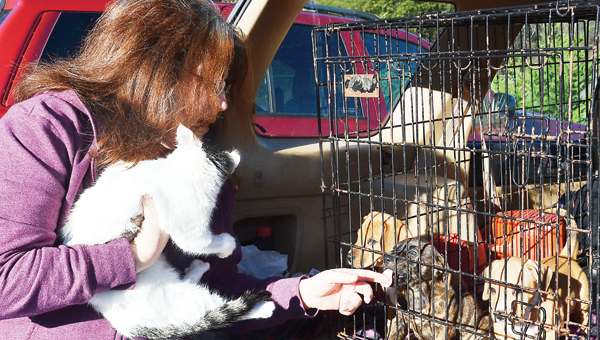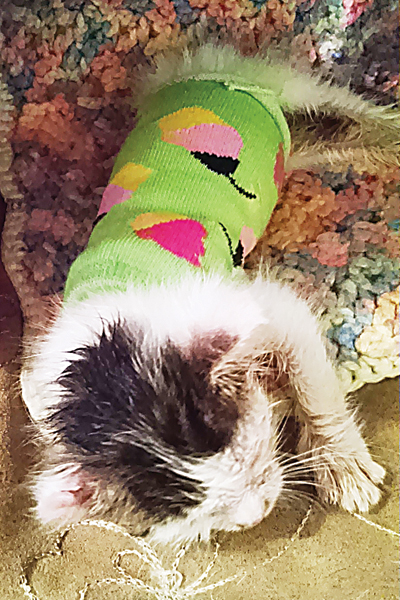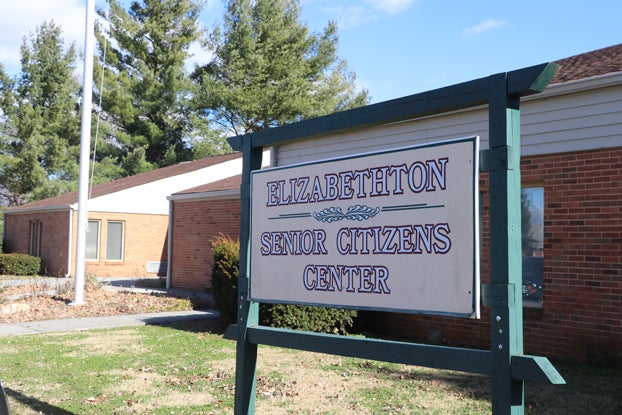Adopting Hope: Fostering gives pets a chance at life
Published 9:37 am Monday, January 11, 2016

Star Photo/Rebekah Price
Foster Mom Paula Alexander prepares to part ways with her three foster pups after completing adoption paperwork for her new kitten Hope.
Since she was seven days old, Paula Alexander’s foster kitten Hope has jumped nearly every medical hurdle in her path. She came to the shelter with a litter of week-old kittens and was the only one to survive. Because she had virtually none of her mother’s milk, she fought constant illness and was even hospitalized for six days.
“It’s been an uphill battle, and her vet folder is probably about two inches wide,” said Alexander. “Nobody thought she’d make it but she did. She’s a miracle.”

Contributed Photo
Six-week-old Hope was struggling to survive and being kept warm by heating pads, warm water bottles and sweaters that her foster mom fashioned from socks.
On Thursday, she became one of only a few foster pets that Alexander has adopted. “I adopt the unadoptables,” she said, adding that she also once adopted a three-legged dog. She knows pets must be returned and simply wants to help them survive and find permanent homes.
On Hope’s adoption day, Alexander returned three foster puppies to the Elizabethton/Carter County Animal Shelter because they had reached eight weeks old and a healthy weight.
“It’s bittersweet dropping off the puppies, because I’m happy for them to find homes, but I’ll miss the little buggers,” said Alexander, of the pups that she had bottle-fed for five weeks.
This was not her first time returning healthy pets to the Elizabethton/Carter County Animal Shelter after nurturing them to an adoptable age and weight. She has been fostering pets for 25 years, beginning in California, continuing in Maine and now in Carter County.
She now fosters four cats, each of which has been underage for adoption or injured.
Her well-established system of separating, weening and socializing foster pets improves their health and well being.
When a pet comes to her home, it is separated from her other fosters for two weeks and potentially longer depending on its condition.
Some come to the shelter and are too young with vulnerable immune systems to be adopted. These and injured or ill animals find restoration in foster homes.
“It also helps to socialize the pets which makes them more adoptable,” said Ashley Eisenback, the veterinarian who provides care to the shelter’s animals.
When a pet comes to the shelter before it is weened at eight weeks, its immune system is not fully capable of protecting it, she explained. So Alexander makes it a priority to maintain her fosters’ medical needs, change her shoes and clothes between caring for each pet and to always be aware of signs of illness or weakness.
Some pets are in perfect health and simply need a transitional place between transport to a rescue, so they may stay over a weekend or for a couple of weeks, Eisenback said.
Alexander said the commitment level for a foster parent can vary greatly depending on the pet’s needs.
“Anybody that is willing to step forward and do the level of care doesn’t need a whole lot of experience,” said Alexander.
Eisenback echoed this saying, “They don’t have to be incredibly well-trained with animals, and we can teach them anything also.”
The shelter provides most, if not all, supplies needed to care for the animals, said Eisenback.
For people who cannot take on their own foster, Alexander said there are other ways to help the program. They can visit Pet Sense to check on cats and to give them attention, or they can volunteer at adoption events. Sometimes foster parents need a petsitter for a weekend or week, if they have to leave town, so she said this could be an avenue for some to help.
“In order to have a much better rate of success, especially on the cat end, anything that somebody is willing to step up and do would be awesome and appreciated,” said Alexander.
Fostering not only benefits the pets, said Eisenback, but it can be great for kids to learn compassion and responsibility. “My daughter loved fostering kittens,” she said.
Alexander said that having two pets together gives the animal a companion and improves social skills, but more than that can cause cross contamination if infections are present.
“It’s one of those things where smaller numbers are better,” Alexander said.
Her case is a little different because as a groomer, she is able to keep some healthy pets at work.
“Animals do better when they can get one-on-one attention,” Alexander said.
This makes more space at the shelter and makes the pets more adoptable when they arrive back at the shelter or at Pet Sense.
Kittens typically go to Pet Sense, Alexander said, and puppies are returned to the shelter because they tend to have the best chance of adoption this way.
While the duration of stay for a foster pet may vary from days to weeks, younger, injured or ill animals tend to take priority in going to a foster home.
“If those young pups that are days or only a few weeks old don’t go to a foster home, it is unlikely that they will make it,” said Alexander.
Shelter Director Stacey Heiden said anyone considering bringing in a litter under eight weeks old should wait till the pups are weaned because without the time to nurse, their immune systems are weak and they run the risk of getting sick and being put to sleep.
With limited resources, the shelter cannot save or adopt out every pet that comes through the door. Heiden said this is why it is so important to have foster homes.
The foster program through ECCAS currently has about six consistent foster parents and a dozen that foster less frequently, according to Heiden. The need for more foster parents is ever-present, she said, especially in lieu of the recent retirement of one regular foster parent.
“I consider the program to be in its infancy, and there is huge potential for growth and involvement,” said Alexander.
Though it has been in existence for years, Heiden said when she took over as director she basically had to recruit new foster homes.
Starting from scratch, Alexander said Heiden is doing a wonderful job, noting the addition of an on-staff veterinarian and the huge difference that has made in other places she has fostered pets.
Pets are sometimes required to return to the shelter for vaccines. Eisenback said foster parents may also be asked to attend adoption events to speak from experience about the program and to help their foster pets find forever homes. Heiden emphasized that pets must be returned to the shelter when the foster period ends, and that if the foster parent, a family member or friend wants to adopt them, they must fill out proper paperwork.
The program provides an avenue for residents to enjoy the company of a pet, to assist the local shelter and to help save the lives of homeless pets in Carter County.
“It’s been very good for people to come on board with the program,” said Eisenback. “It gives people a direction to gear their energy, and we get a lot of positive feedback.”



